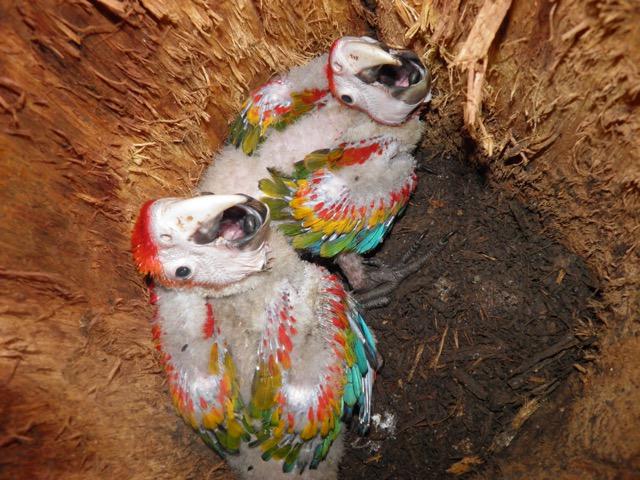George Olah
Other projects
6 Feb 2012
Development of Novel Genetic Techniques for Conservation Studies of Large Macaws II
This study in the lowland Amazonian rainforest of SE Peru is aiming to document the current population genetic structure of Scarlet Macaw (Ara macao) populations and assess the feasibility of genetic tagging technique for measuring home-range, dispersal, and population structure.

This PhD project was initiated with three main objectives:
(1) To understand and document the breeding biology, and current demographic and population genetic structure of Scarlet Macaw populations in SE Peru. It is important to document the original population genetic structure of these populations for evaluating the effect of impending habitat fragmentation.
(2) We will develop and test a novel genetic technique for studying the spatial scale of dispersal and movements in wild macaws. Satellite telemetry is very expensive and can only be carried out on a small number of birds. Our study will complement planned satellite telemetry by other researchers by using non-invasive genetic tagging and allow many more individuals to be tracked for providing information about the dispersal of the populations. Genetic tagging is a newly emerging technique in molecular ecology, which enables the unique identification of individuals by their hypervariable genetic markers, and has proven to be a highly effective method in other studies.
(3) The last objective of this study will be to apply our new techniques to specific conservation issues concerning wild macaws. Although the habitat of Scarlet Macaws is still relatively intact today, a highway is being built in the study area. Identifying individuals through the landscape by their dropped feathers, we could estimate the home range used by the population. Another conservation concern in the study area is that oil companies are starting to explore areas with still largely intact ecosystems such as the Candamo Valley. Our samples from Candamo will provide a strong scientific basis for identifying the importance of the valley, and will be extremely important in any recommendations for maintaining the protected status of this biodiversity hotspot. Once tested, we would advocate the application of genetic tagging for the conservation biology of other endangered macaw species.